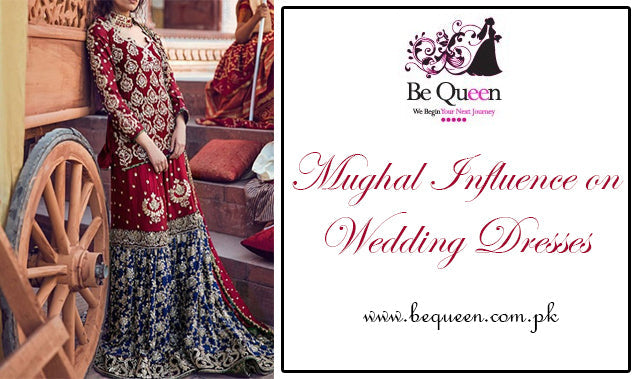
Ask any bridal wear expert to rattle off popular bridal dress forms in Pakistan and you are bound to hear traditional Mughal sounding names. Faaz Zariwala comes from a family of craftsmen who has dedicated their lives preserving the ancient art of Bridal Wear while adapting them to modern tastes. His father Mr. Saleem Yousuf owns BeQueen. His Bridal Wear studio is located inside Mateen Center, Tariq Road, Karachi.
Mr. Zariwala caters to local and International Clientele. His list of popular traditional bridal wear dresses included Sharara, Gharara, Maxi, Tall Maxi and Dhaka Pyjama. I don’t know about you but that sure sounded like a trip to the ancient history of evergreen fashion museum.
The Mughal Emperors ruled the subcontinent from 1526 to 1707. Their reign lasted a hundred and eighty years. Today, the direct influences of the Empire live on in a modern-day state of Pakistan, India, Bangladesh and Afghanistan. The marriage between Persian and Indian Art is evident in the cuisine, language, architecture, religion and customs. It also makes itself felt in a very visual way in the form of fashion.
Sure the Mughals were into warring and conquering the land but they also developed various industries and made reforms that would allow for the people to live in peace. The emperor Akbar was responsible for the clearing of forests to promote agriculture and harvesting of cash crops like cotton in Bengal. So much so that it became responsible for 50% of GDP for entire India chiefly by its export of the Textile industry to most of Europe.
Since weddings in Pakistan tend to be bloated and fancy in nature, therefore it kind of makes sense that wedding dresses are inspired by the Mughals. Not only are the traditional custom-made dresses expensive, starting prices are worth three months of an average salary, but they also require hundreds of hours of craftsmanship. It is common for a dress to take three months to be fully completed. This should not come as a surprise knowing that the intricate embroidery and the use of precious materials require great care and precision.

